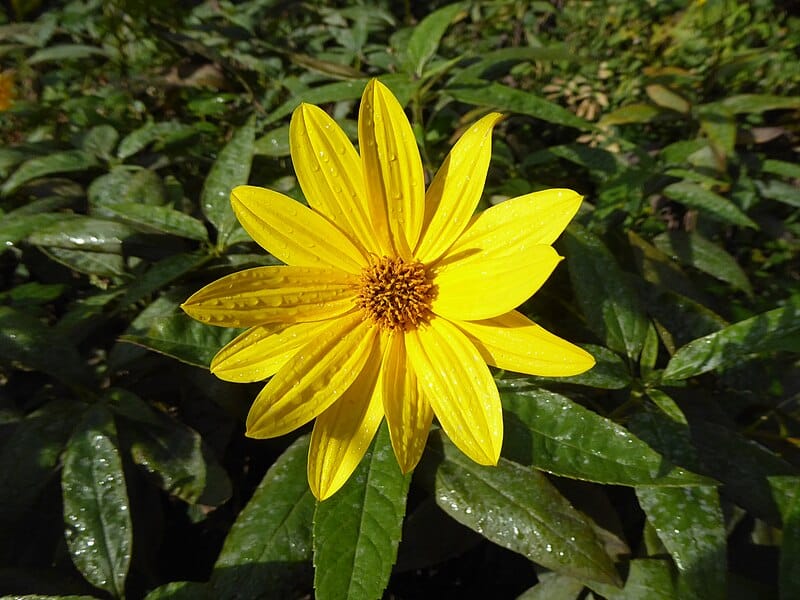Jerusalem Artichoke Identification – Helianthus tuberosus
Heads up
The name Jerusalem Artichoke might seem quite puzzling. The scientific name of this plant is Helianthus tuberosus. Breaking it down, Helianthus means “sunflower” and tuberosus hints at the “tubers” it grows underground. This plant is a part of the Asteraceae family, which is commonly known as the Aster family. If you’re wondering, no, it doesn’t have any direct link to the city of Jerusalem or the vegetable we call an artichoke. Some speculate that the name “Jerusalem” might have been a corruption of the Italian word ‘girasole’ meaning sunflower.
Jerusalem Artichoke: Key Parts in Photos




Where to find it
If you’re out exploring moist fields, thickets, or the edges of woods, particularly those with partial shade or in full sun, keep an eye out. The Jerusalem Artichoke loves these spots. And, if you’re out during its bloom time from August to October, the flowers will be a great giveaway.
How to identify Jerusalem Artichoke
When in full bloom, this plant can be quite a sight. At the top, you’ll find up to 15 flowers. Each of these is about 3 inches across, showcasing a vibrant display of yellow petals. These petals surround a center filled with yellow-orange disk flowers which might remind you a bit of sunflowers. Have a closer look beneath the flower. You’ll notice bracts, which are modified or specialized leaves that usually surround a flower. In the Jerusalem Artichoke, these bracts are about half an inch long, covered in hairs, and have a sharp point. They spread out at the tips, adding another layer to its unique floral appearance. After the bloom, the center disk of the flower forms seeds. These dry seeds come without any tuft. Instead, you’ll find two bristly scales at the tip.
One of the things that makes the Jerusalem Artichoke special is its tubers. Formed late in the season, these tubers look like ginger and are edible.
The plant’s leaves can be pretty large, going up to 10 inches in length. They have a shape that tapers to a point at the tip and narrows suddenly near the base. You’ll find these leaves on stalks, and sometimes, these stalks can be winged. The leaves can be serrated or almost without any teeth. The leaves can be opposite each other or alternate in their arrangement. The leaf’s upper surface feels rough, while the bottom is a bit hairy. The plant’s stem might appear green or sometimes reddish. If you touch it, it feels rough, thanks to the stiff hairs covering it.
